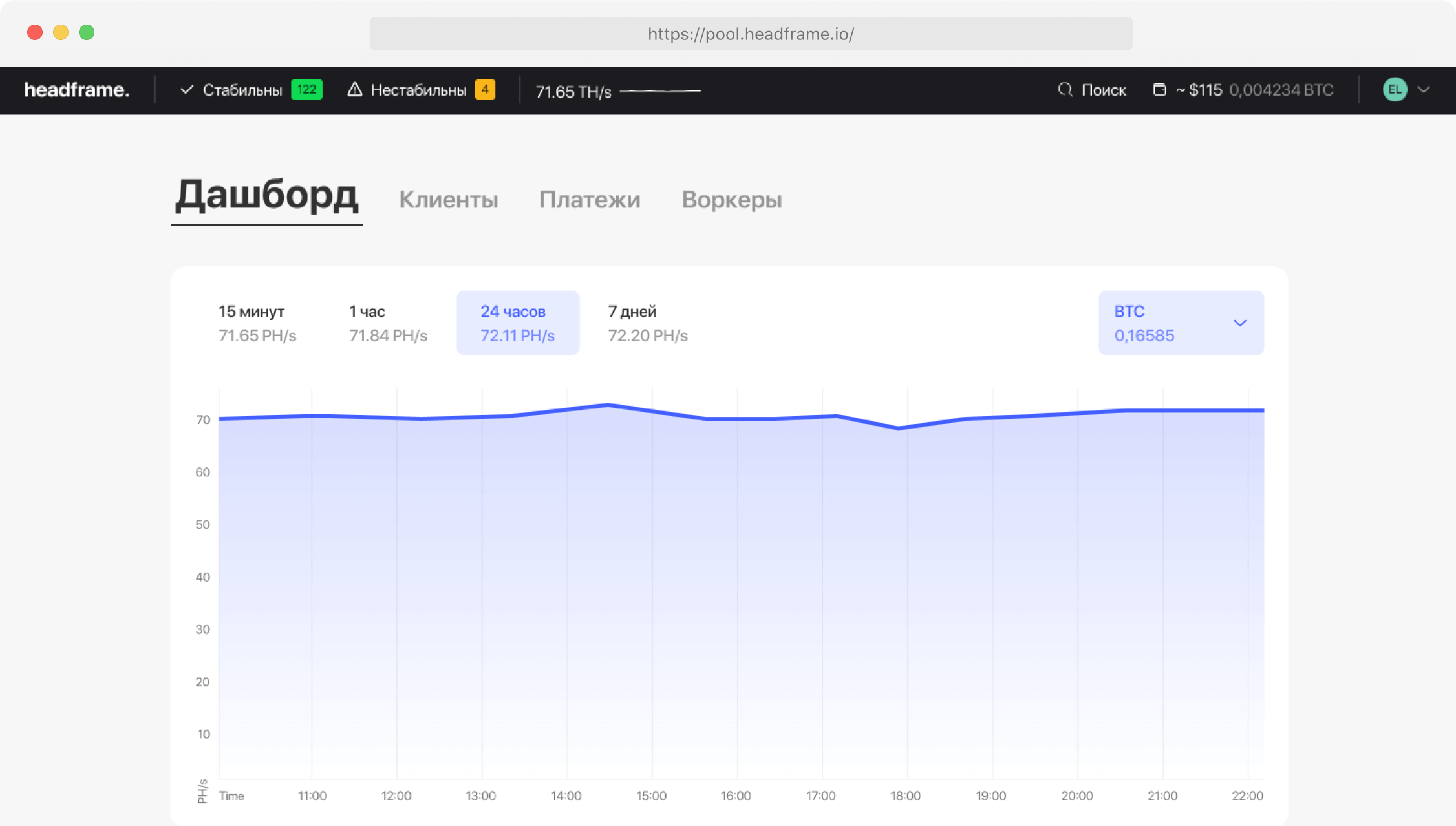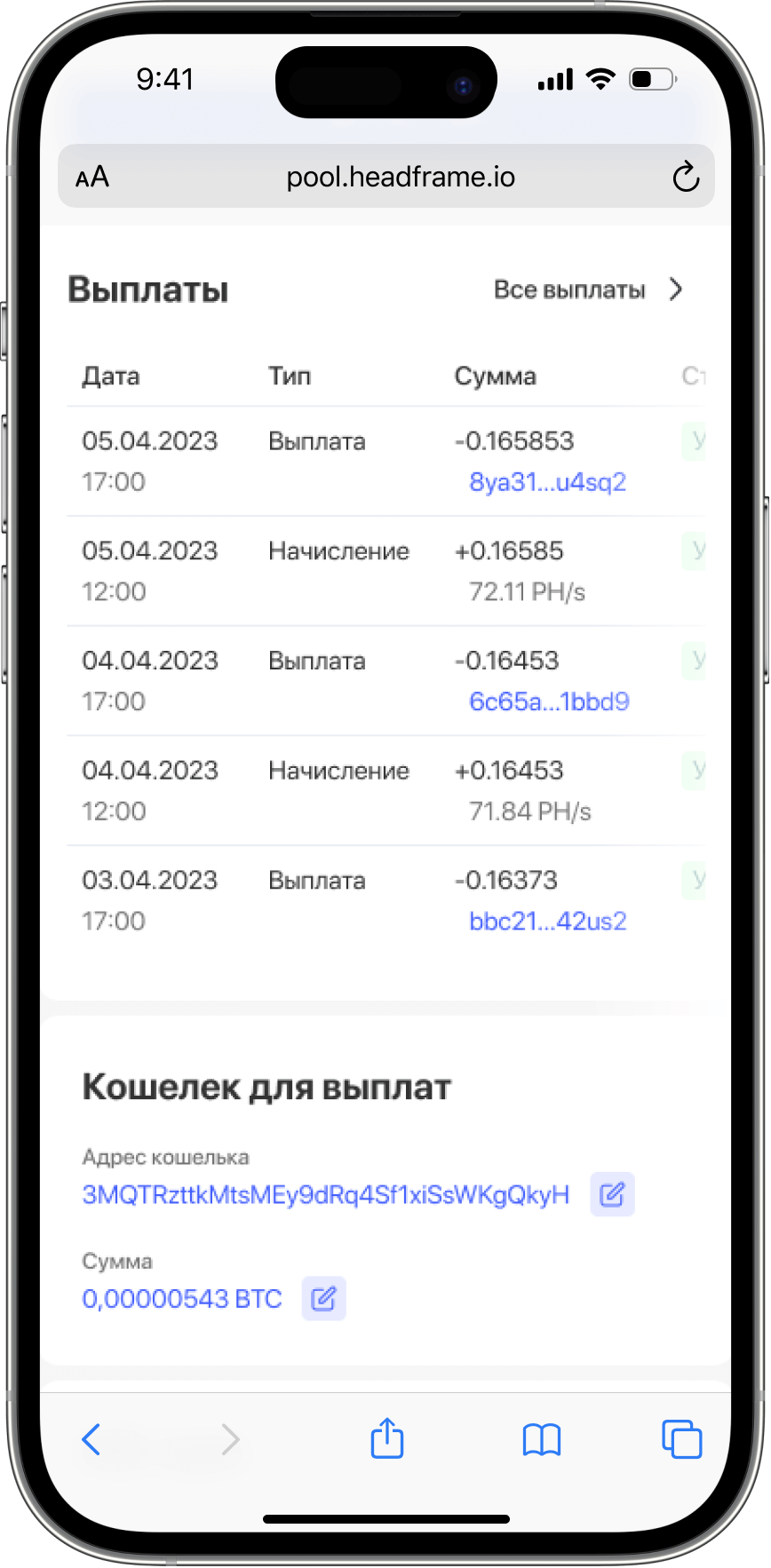
5 Proven Strategies to Maximize SHA256 ASIC Miner Hashrate and Cut Energy Costs
In Bitcoin mining, margins are razor-thin, and small gains in efficiency can have a significant impact over time. As fellow SHA256 ASIC miners, we understand that maximizing hash rate and minimizing energy costs isn’t just a technical challenge—it’s the key to staying profitable. At Headframe, we’re constantly working with miners just like you, distilling hard-won lessons from real operations into actionable strategies. Here, we’ll go deeper than the obvious and share five proven approaches to boost performance and slash operational costs for your SHA256 ASIC setups—drawing on both advanced engineering concepts and the real-world needs of modern mining businesses.
Зарабатывайте больше с Headframe
Присоединяйтесь к майнинг- пулу и получите лучшую доходность в майнинге. Уже более 10,000 майнеров доверяют Headframe

1. Fine-Tune ASIC Operating Parameters for Maximum Hashrate
Every SHA256 ASIC runs on a balance between speed and stability. Pushing your hardware to its real potential often involves custom tuning that most miners overlook. Here’s what sets elite miners apart:
- Incremental Overclocking: Carefully raise clock speeds in small steps (typically 1-3% at a time), monitoring stability at each step. Watch for hardware errors or rejected shares—it’s not just about max numbers, it’s about sustainable output.
- Power Supply Adjustments: Under-volting (reducing voltage while maintaining clock speed) is a powerful method to cut electricity draw and heat without sacrificing hashrate. Many modern power supplies and ASIC firmware support this natively.
- Firmware Updates: Running the latest manufacturer or trusted firmware ensures you’re leveraging architectural fixes and mining logic improvements that can unlock new performance levels or reduce invalid share rates.
Our own operations team at Headframe encourages verifying each change in real-world mining conditions for at least 24 hours before scaling settings fleet-wide. This discipline will protect hardware and ensure your tweaks deliver real ROI.
2. Advanced Thermal Management—Not Just Fans
Heat is both a limiting factor and a major hidden cost. Cooling is where many mining operations lose efficiency—if one hotspot triggers throttling, your top-line hash rate plummets. Here’s how serious miners get ahead:
- Ambient Room Control: Instead of cooling the ASICs directly, invest in robust room or container-level airflow. Hot/cold aisles, directed ducting, and negative-pressure exhaust systems can equalize temps and prevent heat accumulations.
- Immersion Cooling: Leading-edge sites are deploying single-phase immersion (where ASICs are submerged in non-conductive fluid) or hybrid systems for thermal performance, lower noise, and extended hardware life.
- Preventative Maintenance: Monthly cleaning of heatsinks and fans makes a real difference—dust buildup alone can degrade cooling by 5-10% in high-dust environments.

3. Strategic Mining Pool and Hashrate Management
Performance isn’t just inside your miner—it’s how your rigs interact with the pool. At Headframe, we see up to 5% more BTC payouts for miners who:
- Choose FPPS Payout Pools: Full Pay Per Share (FPPS) guarantees stable daily payouts, eliminating variance and aligning energy use with actual BTC yield.
- Optimize Worker Naming: Use detailed worker names (describing ASIC location or status) to swiftly troubleshoot and rebalance hashrate if a cluster underperforms.
- Leverage Hashrate Control Dashboards: Real-time hashrate splitting, sub-account creation, and detailed analytics—like those in our Headframe Control Hub—let you spot and fix inefficiencies before they cut into profits.
Our platform’s unique approach to hashrate transfer and pooled account control lets hosting providers and large miners respond instantly to underlying hardware shifts, improving uptime and maximizing overall portfolio rewards.
4. Cutting-Edge ASIC Algorithm Optimization
While most miners can’t rewrite ASIC silicon, advanced users can take advantage of firmware-level algorithm improvements and best practices:
- Firmware Customization: Expert-developed firmware sometimes enables compression function optimizations or implements pipeline balancing, reducing calculation time per hash. Always source firmware from trusted providers and test on a subset before rolling out.
- Message Scheduling & Pre-Processing: Miners with developer resources can explore pre-computing static portions of the SHA256 algorithm, minimizing redundant steps at the pool server end (faster job assignments, less idle time for rigs).
- Batch Job Submissions: Instead of supplying jobs one at a time, some pools and advanced management software can feed miners a queue, ensuring rigs are never idle waiting for new blocks—a detail that adds up, especially at large scale.
5. Intelligent Energy Procurement and Load Management
Most miners obsess over hardware, but power strategy can make or break your operation. We recommend:
- Negotiating Bulk Power Rates: Power providers often offer much lower rates for consistent, high-volume draw. Find synergies with other local miners to aggregate demand or approach energy brokers for special deals.
- Smart Scheduling: In regions with variable energy rates, program some or all miners to ramp down during peak hours and ramp up during off-peak times. Hashrate temporarily decreases, but profit per kWh increases.
- Real-Time Monitoring & Alerts: Use cloud-connected monitoring (many major ASICs and pools offer this) to instantly alert you if power draw spikes or your cost per TH/s climbs outside target range.

Bonus: The Future—Automated Hashrate Optimization
We’re already seeing miners use AI-driven software to dynamically adjust tuning and pool selection based on network difficulty, temperature, and spot energy prices. At Headframe, we’re actively developing APIs and automation for cross-account management and performance triggers—giving our partners an edge as mining grows more competitive.
Key Takeaways
- Performance tuning goes well beyond the obvious. Regular optimization, test-driven tweaking, and operational discipline matter more than headline specs.
- Advanced thermal management and power purchasing strategies are just as important as hardware settings.
- Leveraging the right mining pool and management platform (with features built specifically for professional hashrate control) unlocks more consistent BTC rewards and easier business growth—without more manual work.
Ready to step up your mining operations? Explore how Headframe can help you centralize your miner management, effortlessly split hashrate, automate payouts, and get the absolute most from every SHA256 ASIC you deploy.


